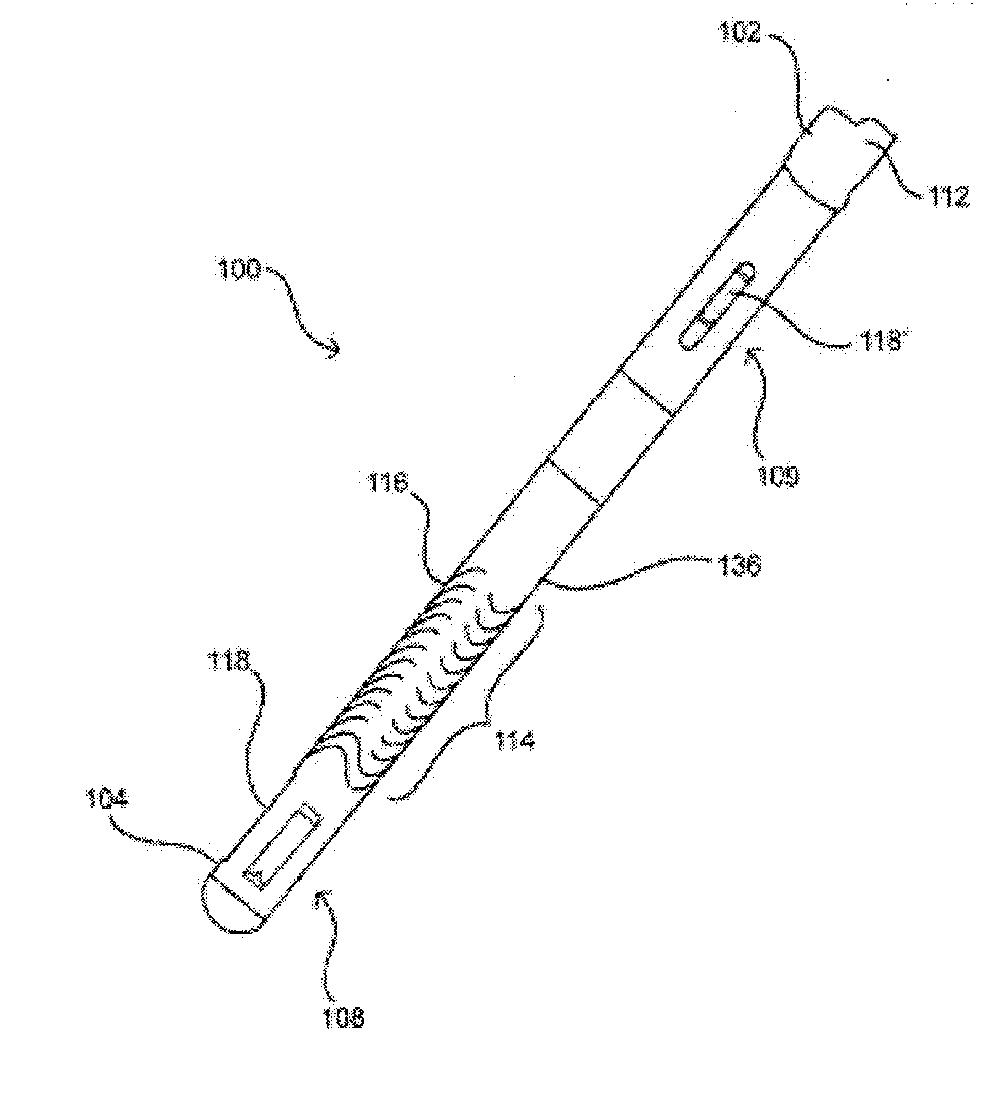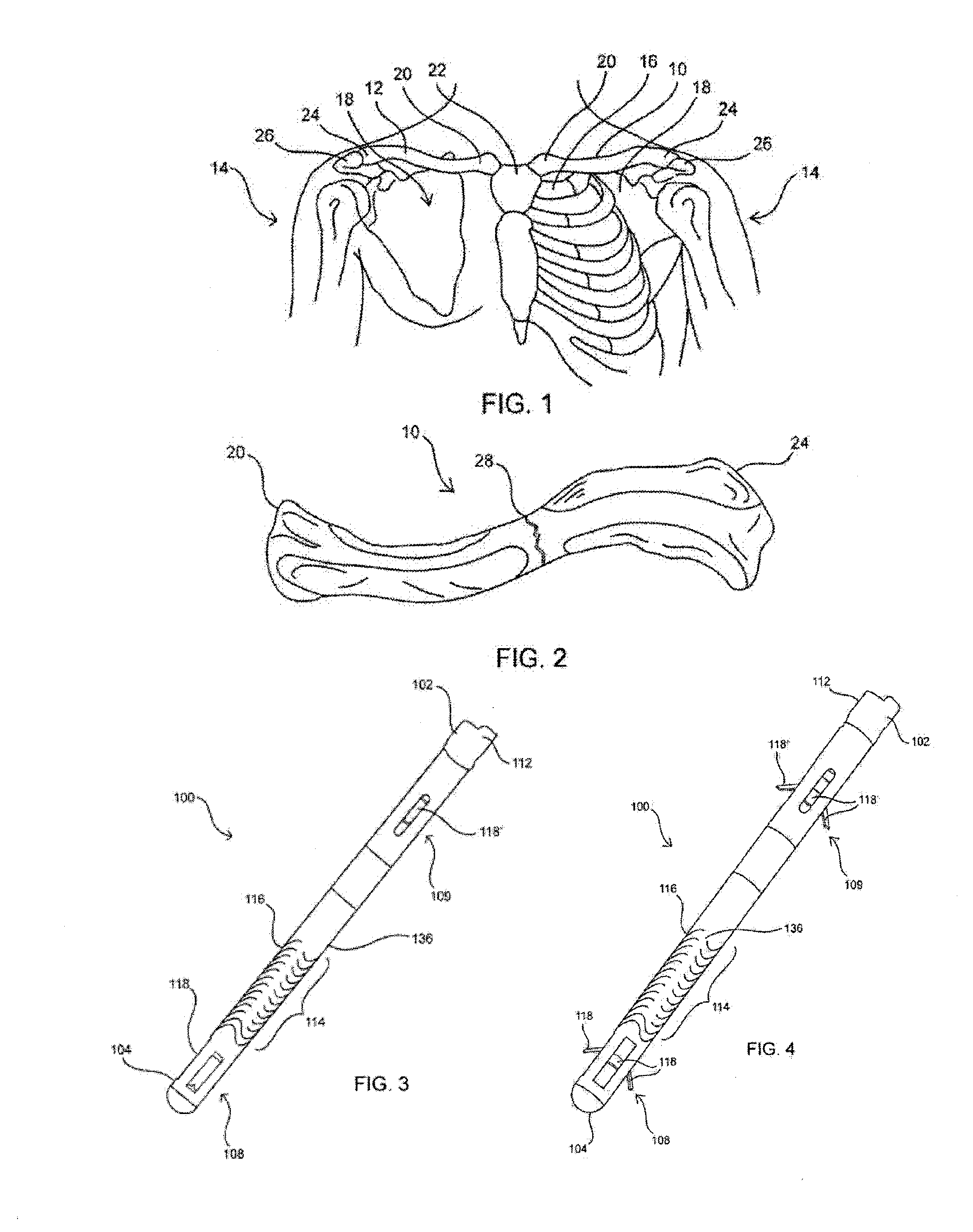Segmented intramedullary fracture fixation devices and methods
a fracture fixation device and intramedullary technology, applied in the field of segments intramedullary fracture fixation devices and methods, can solve the problems of multiple trauma and resultant fractures, increased number of non-life-threatening fractures, and significant bone fractures
- Summary
- Abstract
- Description
- Claims
- Application Information
AI Technical Summary
Benefits of technology
Problems solved by technology
Method used
Image
Examples
example 1
[0475]The following example is intended to be a non-limiting embodiment of the invention.
[0476]As illustrated at FIGS. 137-140, it was experimentally verified that an embodiment of a segmented flexible-to-rigid body portion 10100 of a segmented implant 10000 had improved loading characteristics when compared to a non-segmented implant 10000. In an experimental set up, a non-segmented, helical flexible-to-rigid body portion of an implant was subjected to various loading conditions and compared to a segmented flexible-to-rigid body portion 10100 of a segmented implant 10000 with a non-“T” shaped interlocking geometry (T-less), and compared to a segmented flexible-to-rigid body portion 10100 of a segmented implant 10000 with a “T” shaped interlocking geometry. Each of the three implants have the same length in the deactuated / straightened state.
[0477]FIG. 137 illustrates chart illustrating results from an experimental setup with various embodiments of implants of the present invention, ...
PUM
 Login to View More
Login to View More Abstract
Description
Claims
Application Information
 Login to View More
Login to View More - R&D
- Intellectual Property
- Life Sciences
- Materials
- Tech Scout
- Unparalleled Data Quality
- Higher Quality Content
- 60% Fewer Hallucinations
Browse by: Latest US Patents, China's latest patents, Technical Efficacy Thesaurus, Application Domain, Technology Topic, Popular Technical Reports.
© 2025 PatSnap. All rights reserved.Legal|Privacy policy|Modern Slavery Act Transparency Statement|Sitemap|About US| Contact US: help@patsnap.com



